Last Updated on November 10, 2020 by Heather Wibbels

Bitters make bourbon (and whiskey) better. Bitters are more than just flair for mixologists to add to cocktails. They’re a critical element of flavor, aroma and balance in many bourbon cocktails.
(Post may contain affiliate links)
Bitters are essentially your spice rack for cocktails. They’re your salt and pepper. They’re often a binding agent that brings together disparate flavors or pulls out complementary flavors in foods. Not only do they balance out sweetness, but they adjust acidity in cocktails as well.
This is a three part series of posts:
- Basics of bitters, what they are and their history (this post) and why to use them with whiskey and bourbon
- Categories of bitters, tips on how to use them and a basic set to start your home bar
- How to evaluate bitters for cocktails, and intermediate and an advanced set of bitters to add to your home bar
So let’s start with the basics:
Bourbon and Bitters: What is Bitterness and Why is it Important?

The human response to bitterness developed over the process of evolution to protect humans from the consumption of toxic substances. Oftentimes plants, fruits, bark, or herbs that were bitter were toxic. Over time that meant humans developed a sensitivity to bitterness as a defense mechanism to protect us.
However, many of those same bitter elements were some of the first medicines. Before Big Pharma, humans used plants, botanical extracts, leaves, herbs, flowers, etc. as medicine. As the earliest healers in humanity experimented and discovered natural medicines developed from the world around them some of the fear or aversion to bitters decreased. Those bitter things might soak in water as teas, or alcohol once distillation was created. And we consumed some of them as medicines.
Now, though, bitterness is not so important as a survival technique, and in many ways bitterness increases our intrigue with a taste. If the bitterness is not overwhelming, if it is balanced in a bourbon or whiskey cocktail, it often generates an internal response like, “That was interesting. A little bitter, but intriguing. I should have another taste.”
Our lizard brain may be screaming danger, but our humanness wants to take the chance and risk it, just for another sip of bourbon and bitters to see if it really is dangerous. I think bitterness can make us feel like we’re taking a walk on the wild side, so to speak.
What are Bitters?
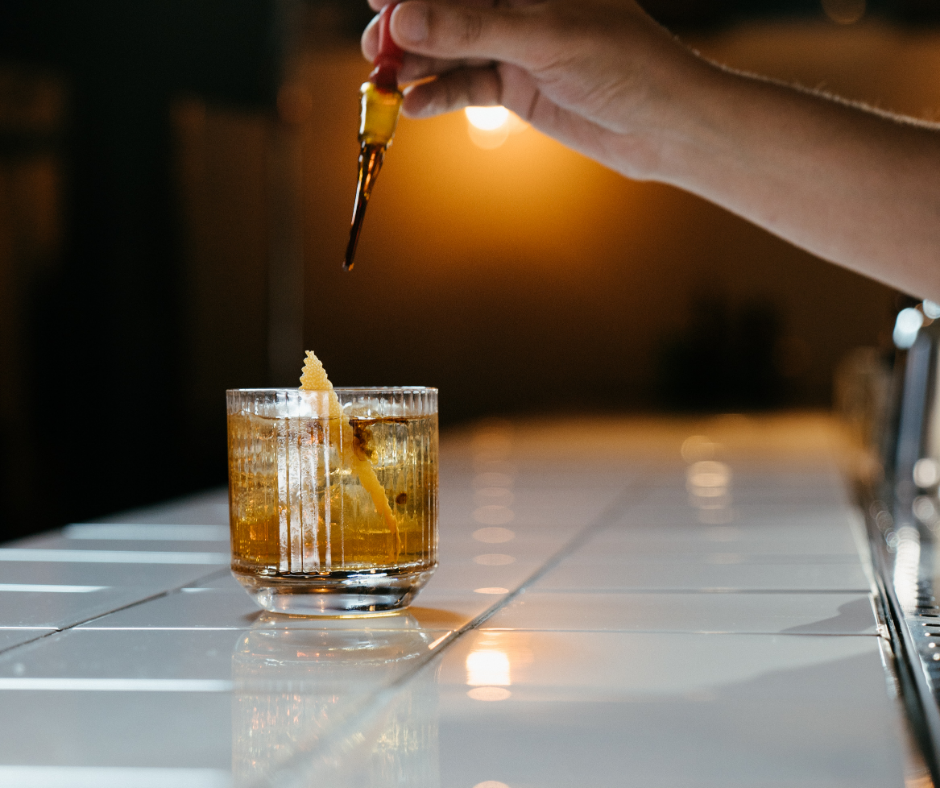
Bitters consist of a flavored infusion or tinctures either made in alcohol or in glycerin. The tinctures/infusions use parts of plants – roots, bark, seeds, peels, nuts, fruits – anything with flavor. They can be made from both bittering agents or flavoring agents or both. The infusion process concentrates the flavor of the element in the alcohol or glycerin, with the result that only small amounts are needed to impart a large flavor or aroma to a cocktail.
Flavoring agent vs bittering agent
Bitter production often includes both flavoring and bittering agents. Bittering agents, like wild cherry bark, orris root, chincona, or wormwood impart the true bitter taste to the bitters. Think of a tea or decoction with wild bark in it. They’re terribly bitter. But each bitterness has notes of other flavors. Some bittering agents taste earthy, others sharp and medicinal, some taste chalky.
So often bitter makers will pair those base notes of bitterness with flavoring agents like
- Peppers
- Cocoa nibs
- Fruit peels
- Herbs
- Spices
- Nuts
- Coffee
The addition of those flavoring agents adds flavor and aroma to the bitters. Those flavoring agents can signal the brain as we taste, giving us reminders of the flavor or aroma and helping the brain interpret the taste input. They often pull or accentuate latent flavors in the cocktail elements and move them to the forefront.
Generally, a combination of both will be used in the creation of bitters. For control over the final flavor, some bitters makers create tinctures of each separate ingredient and combine them to create the final product. This gives them final control of the full flavor and aroma of each batch.
On Bourbon and Bitters: History of Bitters
I’ve already described a little of the history of bitters. In their uses as medicinal tinctures, healers prescribed their consumption, often in teas or food. Once alcohol production became common, pharmacists used alcohol to extract and concentrate the medicinal qualities of the plants.
Some saloons and pharmacists touted cocktails as medicinal because they contained plant extracts, and were part of the reason a cocktail was a morning drink. You take your medicine first thing, too, don’t you?
Modern bitters started in the late 1700s to early 1800s as health cures. In Colonial times in America, they were your medicine cabinet, or your pharmacy that cured what ailed you. These extracts were invariably bitter and it’s likely some were safer than others. Some snake oil cures likely fell in this category.

JGB Siegert created Angostura bitters to cure malaria and stomach ailments for soldiers in 1824. He created them in the city Angostura in Venezuela but his formulation didn’t have angostura bark in them. Siegert was a shrewd businessman. He sued companies using angostura in their name (even though there is a bark angostura that can be used in bitters). From the history it appears he sued many other bitters companies out of business.
Another early and popular bitter originated in the US, created by Antoine Peychaud in 1838 in the French Quarter of New Orleans. He was a Haitian pharmacist who promoted the consumption of his bitters with a bit of Cognac. And that’s where we find the origin of the first Sazerac – as Peychaud created an easy tipple to make the bitters go down smoother. Today, we’ve switched from Cognac to whiskey, but Peychuad’s bitters and a tiny bit of absinthe still complete the bittered whiskey cocktail.

As the cocktail scene expanded in the late 1800s and early 1900s and alcohol consumption rose in the US, dozens of bitters were created with touted medicinal effects. Bitters were everywhere as cures and cocktail ingredients.
Sidenote: Angostura survived Prohibition, as most other bitters companies did not, by convincing the US government that the bitters were not potable and that no one in their right mind would sip bitters straight from the bottle as they would a spirit. He got away with it. He was the only U.S. bitters company to survive Prohibition.
Like most of the rest of the spirits industry, bitters companies were decimated by Prohibition. Afterwards, only Angostura and Peychaud’s bitters were commonly found in the U.S. Until the cocktail renaissance of the early 2000s, there weren’t many bitters available in the U.S. at all.
Now, though, hundreds of bitters and bitters and small batch bitters companies are thriving here and around the world.
Why Do You Use Bitters in a Bourbon or Whiskey Cocktail?
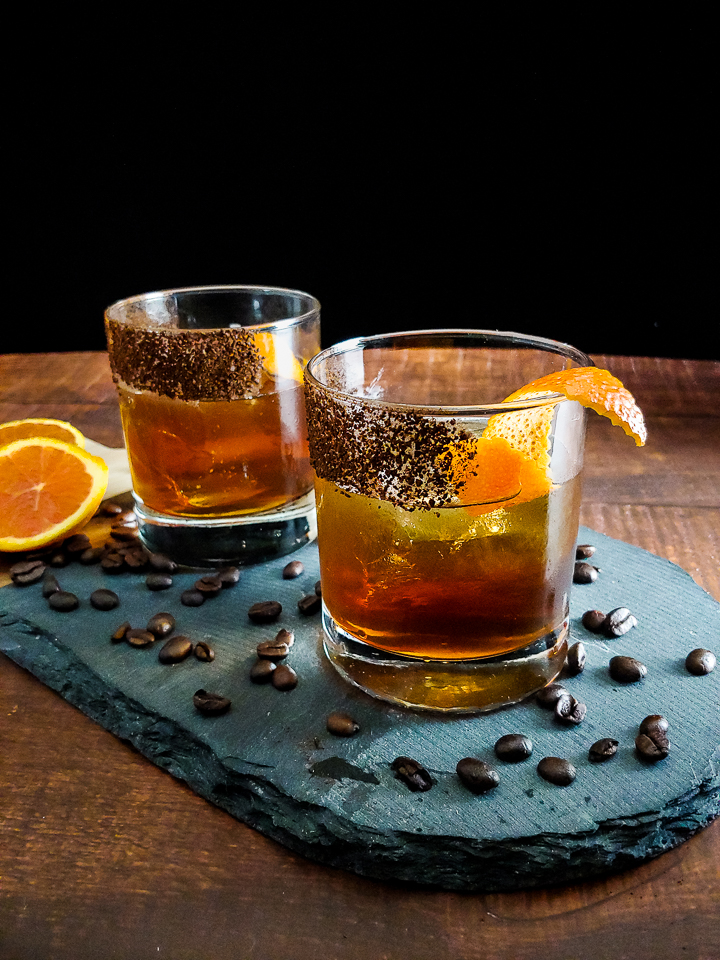
In a cocktail, especially a bourbon or whiskey cocktail, bitters can be essential. Bitters create balance. Bitters work well with bourbon, such a sweet spirit, because they can tame that sweetness. When you taste bourbon and find those sweet vanilla, corn, caramel, fruit or nut notes, you can balance that with bitters.
Think of taste as a balancing scale. In a cocktail, you want a drink that’s not too sweet and not too sour. Bitters balance that in bourbon cocktails (in any cocktail, really). Bitterness detracts from the sweetness and the acidity in a cocktail, balancing and blending the flavors together.
Why Add Bitters to Bourbon?
In a bourbon cocktail, bitters can either
- bind the drink together as a whole, often the case with aromatic bitters. Bitters are that person in the room that makes everyone get along and brings them together.
- add flavors and increase depth without adding either sweetness or acidity. That one taste element needed to complete the flavor profile of a cocktail.
Other spirits, like vodka, which has far less flavor than bourbon, or gin which has a strong pine/juniper flavor (generally) aren’t as sweet as bourbon or rye whiskies. So for whiskies, the use of bitters to tame the inherent sweetness and aromas of the cocktail acts as natural balance.
Just remember bitters create balance. That’s the key.
I’ll continue with my list of basic bitters for bourbons tomorrow, but I want to leave you with a cocktail example for both binding and flavoring actions.

First, a traditional Sazerac where the bitters are used to pull the cocktail together. Pechaud’s bitters are bittersweet and aromatic, with slight licorice and citrus flavors. Those flavors bind the Copper and Kings absinthe rinse used to coat the glass to the bitters themselves and the sweetness in the rye whiskey. They bind the flavors into a cohesive whole because they contain elements of the other ingredients in the cocktail, and add a layer or aromatics that makes everything play well together.
Second, a variation on a Sazerac with one change – the addition of The Bitter Truth’s dark chocolate bitters and just a touch of chocolate liqueur to bring in a little more earthiness. Try them and see what you think. I love the flavor combination of the chilly, cooling absinthe with the earthiness of the chocolate.
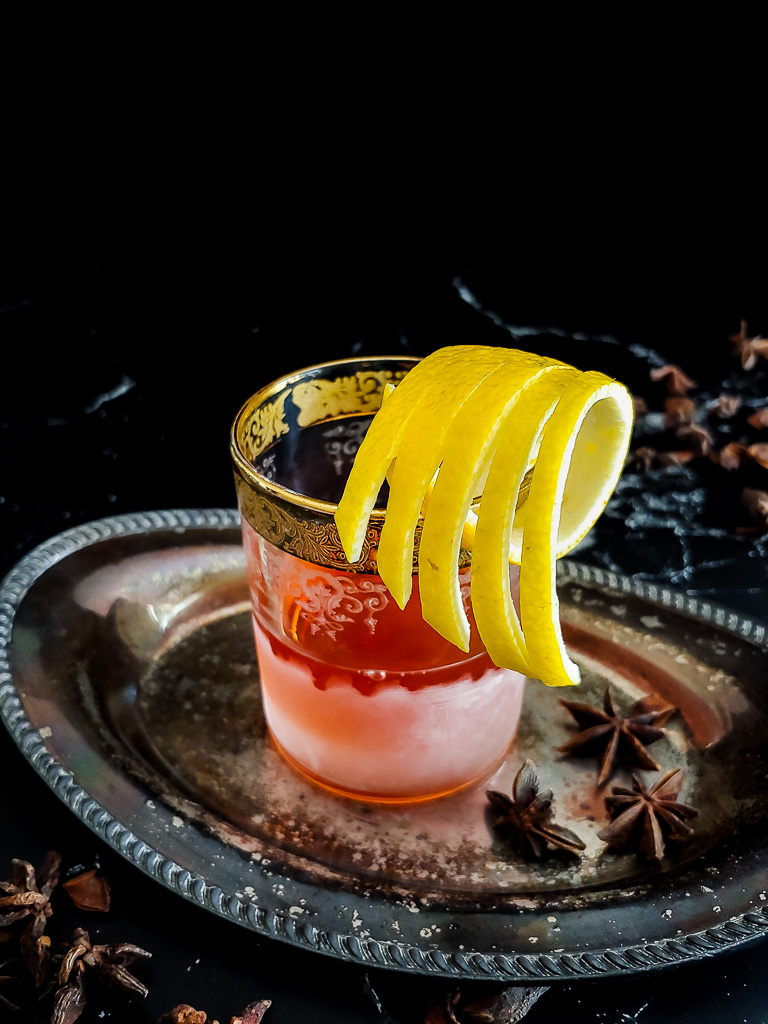
Other Sazerac-Inspired Cocktails to Try:
- Sazerac Slushie
- Oleo Sazerac (Orange sugar syrup replaces simple)
- Midnight on the Bayou – Manhattan/Sazerac riff
- Exit Strategy – Black Licorice Manhattan
Recommended Bar Tools
You don’t need every slick, beautiful bar tool out there, but there are several I’ll recommend. (As an Amazon Associate I earn from qualifying purchases. However, that does not affect the cost of the items below.) My favorite pieces usually come from the Cocktail Kingdom section of Amazon:
You may already have these bar essentials, but just in case:
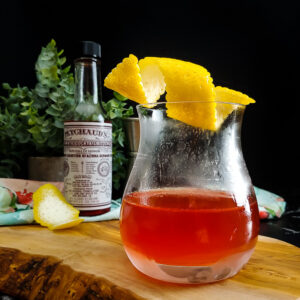
Classic Sazerac
Ingredients
- 2 oz rye whiskey 100 proof
- ½ oz simple syrup
- 3 dashes Peychaud’s bitters
- Absinthe rinse or mist from an atomizer (I used Copper and Kings Absinthe)
- Lemon peel for garnish
Instructions
- Combine whiskey, simple and bitters in a mixing glass and add ice. Stir until well-chilled.
- Strain into a rocks glass rinsed with absinthe. Express a lemon peel over the cocktail and discard the peel or dress up the rim of the cocktail.
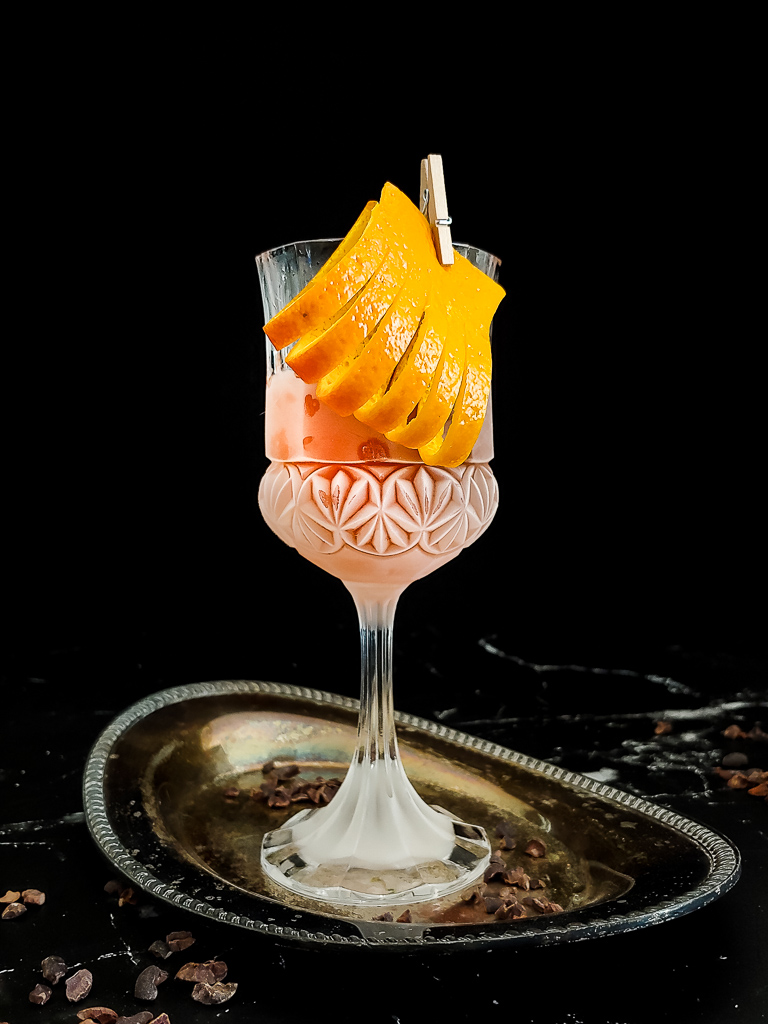
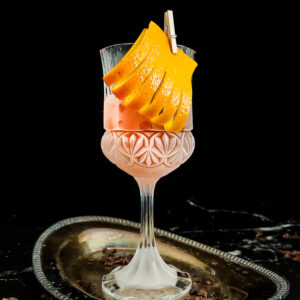
Chocolate Sazerac
Ingredients
- 2 oz rye whiskey
- ¼ oz simple syrup
- ¼ oz crème de cacao
- 2 dashes Peychaud’s bitters
- 2 dashes chocolate bitters
- Absinthe rinse or mist from atomizer (I used Copper and Kings Absinthe)
- Orange peel
Instructions
- Combine whiskey, simple, liqueur and bitters in a mixing glass and add ice. Stir until well-chilled. Strain into a rocks glass rinsed with absinthe. Express an orange peel over the cocktail and discard the peel.